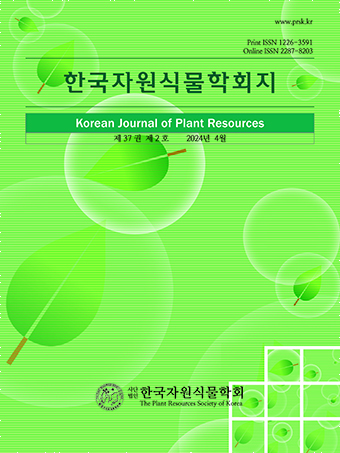Research Article
Abstract
References
Information
Rosalia, M.T.L., C.D.R. Antonielly, P.M.M. Ag-Anne, V.O.S. Jose, W.G.O.F. Jose, R.O.F. Jose, V.O.B.A. Marcus, M.O.F.M. Ana, N.K. Ishaq, I. Amirul, J.U. Shaikh, S.A. Eunus, T.I. Muhammad, T. Swati, K.M. Siddhartha, S.M. Mohammad and A.C.M.C. Ana. 2018. Protective and therapeutic potential of ginger (Zingiber officinale) extract and [6]-gingerol in cancer: A comprehensive review. Phytother. Res. 32:1885-1907.
10.1002/ptr.6134
- Publisher :The Plant Resources Society of Korea
- Publisher(Ko) :한국자원식물학회
- Journal Title :Korean Journal of Plant Resources
- Journal Title(Ko) :한국자원식물학회지
- Volume : 34
- No :4
- Pages :362-367
- Received Date : 2020-12-15
- Revised Date : 2021-03-29
- Accepted Date : 2021-04-13
- DOI :https://doi.org/10.7732/kjpr.2021.34.4.362




 Korean Journal of Plant Resources
Korean Journal of Plant Resources







